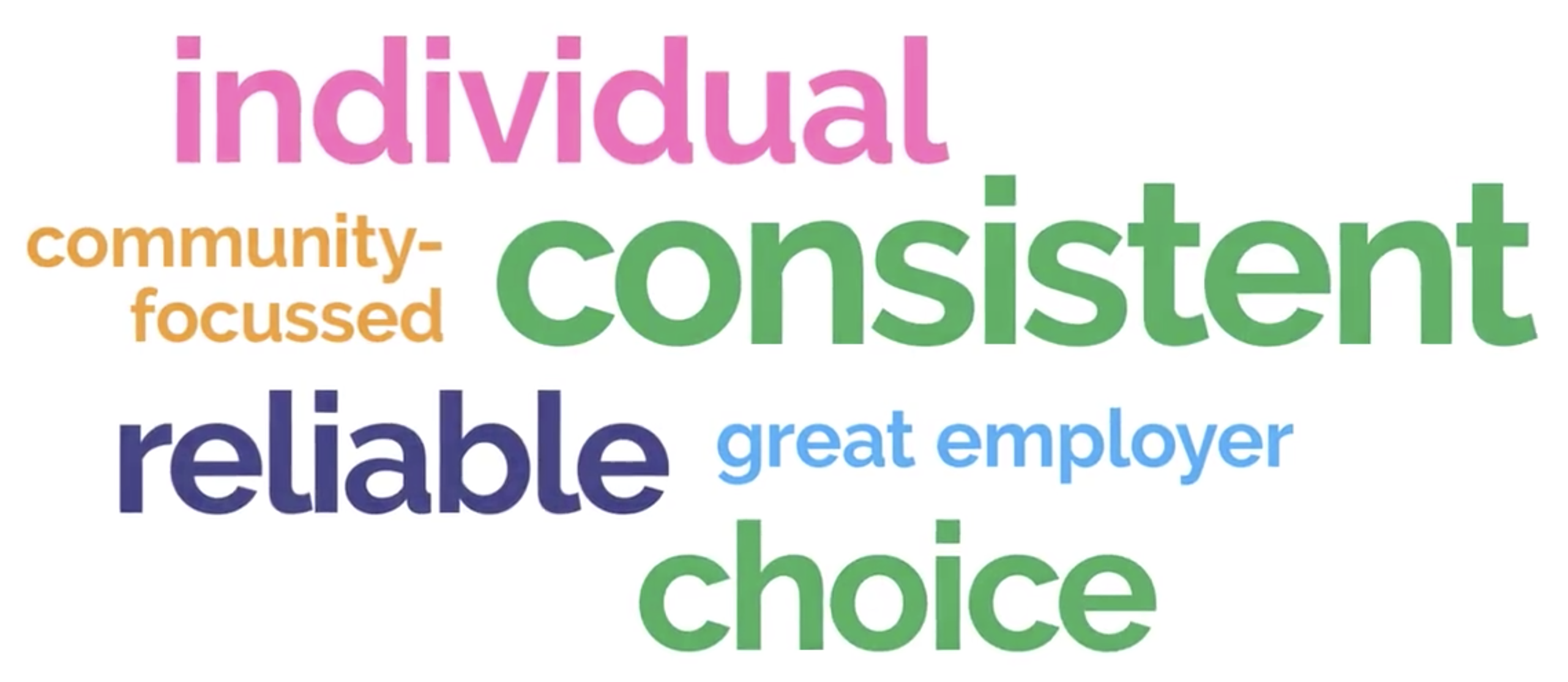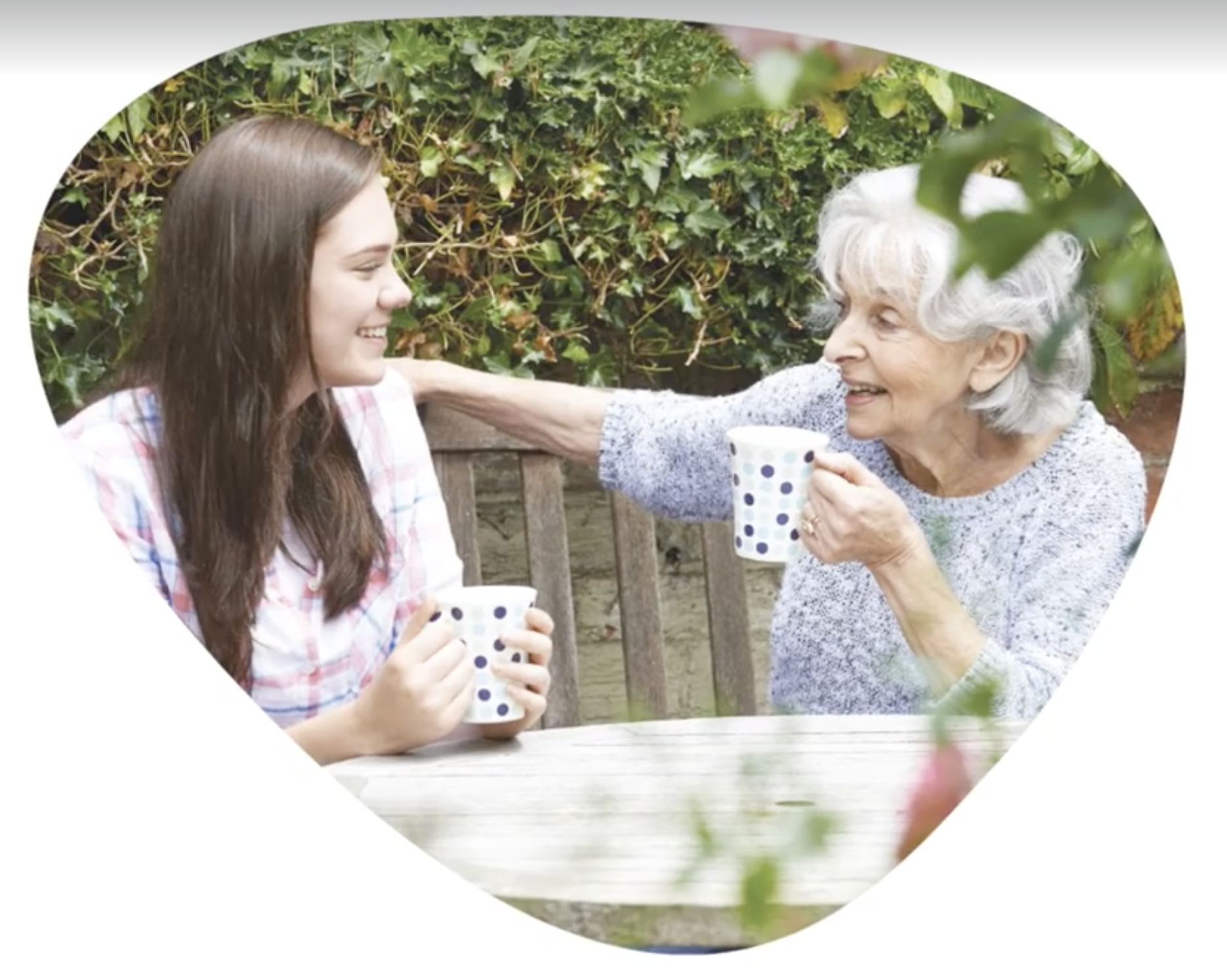How to scale from 6 teams to 600 teams in under 3 years
Part 2 of Reflections by Anna Betz on an interview of Helen Sanderson by Lisa Gill.
Part 1, Lessons from the Journey of a Social Entrepreneur Going Teal. is here.

Initially inspired and encouraged by Buurtzorg, the health and care organisation in the Netherlands described by Frederic Laloux in Reinventing Organizations, Helen Sanderson set out to change how home care gets organised and delivered in the UK. More satisfied staff and satisfied people while delivering health & social care more inexpensively, is what the government and care organisations proclaim they want, but don’t achieve. Helen and her team are convinced they can revolutionise UK homecare by humanising it.
Since the UK has different legal and other frameworks from the Netherlands where Buurtzorg flourishes as a self-managing healthcare organisation, Helen’s challenge was to develop a person-centred and self-managing homecare model within UK regulations.[i] By taking the 3 “Teal-organizational-consciousness” breakthroughs identified by Laloux, and intentionally looking for ways to translate them into everyday practice in the UK context, she took risks, encountered many obstacles, but also met many wonderful people with whom she was able to test her ideas and develop new practices.
Homecare in the UK, as in most other countries, despite being subject to strict regulations, is often of poor standard, unreliable, unpredictable, typically impersonal, and expensive. Private providers (care agencies) are contracted by the local authority to provide homecare, and care workers often have zero-hour contracts. (A zero-hour contract is a type of contract between an employer and a worker, where the employer is not obliged to provide any minimum working hours, while the worker is not obliged to accept any work offered. Basically it doesn’t provide any job security and is similar to casual work.)
Care workers are allocated minimum time slots for specified tasks and the cared-for person might be visited by different care workers in one day.
This makes it difficult for care workers to build a trusting relationship with the person they care for.
Lack of reliability and trust impact people’s mental and physical health.
The bureaucracy surrounding homecare is also making it very expensive for the public sector.
 As Einstein observed so wisely We cannot solve our problems with the same thinking we used when we created them. The thinking from which the present provision of homecare emerged is outcome-oriented and task-oriented. It doesn’t take into account the human aspect of receiving and giving care, or the importance of team dynamics and self-development of caregivers.
As Einstein observed so wisely We cannot solve our problems with the same thinking we used when we created them. The thinking from which the present provision of homecare emerged is outcome-oriented and task-oriented. It doesn’t take into account the human aspect of receiving and giving care, or the importance of team dynamics and self-development of caregivers.
Helen became acutely aware of this shortcoming and how it affects both human and financial cost. When she realised—from discovering Buurtzorg—that this wasn’t the only way homecare could be delivered, she decided to develop a different more human and holistic model of care.
One of the challenges has been how to operate as a self-managing and innovative organisation within the socialised and highly regulated health and social care system in the UK. The organisation that regulates health and social care in the UK is called CQC (Care Quality Commission). Anyone or any organisation who wants to become a provider of social care has to be knowledgeable about relevant UK legislation.
They have to apply for registration as a new manager, and the CQC will undertake an assessment of their fitness to be registered. In particular, the CQC will assess the extent to which the responsible person has the skills, qualifications, and experience necessary to manage the regulated activities he/she has applied for. He/she will need to understand the requirements of the legislation, and be able to explain how he/she will manage regulated activity in accordance with them, in order to be registered.
When Helen made the difficult decision to become a registered manager approved by the same system which she wanted to change, one of the things she needed to work out was how to align being a registered manager with self-management.
Getting the right people in place was another important task to make this new model a success. With her creative and humanistic approach, she has actually found a way to attract the right people.
When the CQC recently carried out their inspection and gave enthusiastic feedback, recognising that the ‘Wellbeing Teams’ are in fact practising a new model of care, this became the most exciting and unexpected win of the week for Helen and her whole team.
With this recognition, the teams have now been given the challenge to demonstrate how self-managed teams can be well-led and ultimately get rated as outstanding by the UK regulators. Helen has no doubt that ‘Wellbeing Teams’ and their work will be a huge success for self-management in delivering health and social care within a regulated framework in the UK.
 Helen changed both the way work gets organised through self-management as well the way workers are recruited and are supported by paying attention to both their professional and personal development. Workers in self-managing ‘Wellbeing Teams’ bring their whole self to work and engage with the whole self of the cared-for person giving both of them maximum personal choice.
Helen changed both the way work gets organised through self-management as well the way workers are recruited and are supported by paying attention to both their professional and personal development. Workers in self-managing ‘Wellbeing Teams’ bring their whole self to work and engage with the whole self of the cared-for person giving both of them maximum personal choice.
Every team of 12 homecare workers has access to 2 coaches to help develop competencies and skills. ‘Wellbeing Teams’ intentionally welcome people without prior experience in caregiving, so that number of coaches are needed for teams of that size. Wellbeing workers may come without care-related experience from seemingly unrelated professions like waitressing or kitchen porters. They are taught what they need to learn.
Helen says that ‘Wellbeing Teams’ sit at the intersection of compassionate care and customer service. Their ethos is to empower people and give them as much choice and control as possible.
The 2 types of coaches every team of 12 care workers has access to are:
- Team coaches support self-management and the team wellbeing. Wellbeing for team members and for people they serve is based on the 5 ways to wellbeing.[ii]
- Practice coaches support team members to get through the caregiver certification process, and support them to deliver compassionate care. Unlike Buurtzorg workers, wellbeing workers are not professional nurses and thus need more training and practice support.
The full model of ‘Wellbeing Teams’ is starting this month in Wigan, a town between Manchester and Liverpool in the UK.[iii]
 Another difference from the traditional way of doing homecare has been to embed Community Circles at the centre of the work. Every team has a community circle connector who works with volunteers, friends, and family members to enable the coming-together of support networks. This is an acknowledgement that health and wellbeing are in essence relational and therefore they benefit from supportive networks.
Another difference from the traditional way of doing homecare has been to embed Community Circles at the centre of the work. Every team has a community circle connector who works with volunteers, friends, and family members to enable the coming-together of support networks. This is an acknowledgement that health and wellbeing are in essence relational and therefore they benefit from supportive networks.
Instead of carrying out traditional assessments, Wellbeing workers offer initial conversations with the aim to figure out with the person what their priorities are, what matters to them, and what their priorities for change are. To be able to meet the requirements of the UK care act, wellbeing workers also need to be familiar with the relevant UK legislation.[iv]
 In working with people, the caregivers ask them: How can we support you to be as confident as possible in managing your long-term condition while living at home?
In working with people, the caregivers ask them: How can we support you to be as confident as possible in managing your long-term condition while living at home?
Their work also includes using assistive technology beyond the traditional ways of using it. For example, a care worker might help set up a Zoom or Skype call for the cared-for person to talk to a family member or friend in another part of the country while the worker prepares the meal for them. Workers use ‘The Support Sequence’, which means that they start with self-care, technology, friends, family, community, and then provide paid support.[v] To make allocated hours and money go as far as possible, they believe they shouldn’t provide paid support if technology can do the job for the person.
The whole team of twelve caregivers is supported by the wellbeing support team, the two coaches, the community connector, and Helen, whose job is to enable the wellbeing teams to flourish. They sit underneath or around the team rather than hierarchically on the top. Taking everyone with them on this journey is most important. They are creating a career path for people.
Weekly team meetings help workers to feel part of teams. Twenty percent of the time is allocated to meet with buddies. If workers can create a different experience for their colleagues, others will want to join them and the organisation can thus grow organically
Why is it important to you?
Lisa’s Question: Holding space for this huge undertaking, why is this so important to you?
Helen: “You never know how long you’ve got left. Getting to 50 made me think about that in a new way. Reading Being mortal made me think ‘If I could contribute to any change or change anything, it is how we see older people, how we think about older age, how we treat each other as we get older and how we die well.’ I asked myself ‘If I only had 3 years, would I want to spend the next 3 years doing what I am doing now as a trainer and consultant?’
I wanted to see if I could be bolder and go further. How great could I be?
To work as a consultant and work with other people’s projects or organisations, there are always boundaries to how far you can make changes. I can only test out these ideas if I am personally taking responsibility for the money, the reputation, and the registration with the CQC.
I want to see how bold I can be and how far we can go with this. And I don’t want to assume that I have 20-years more to work. I want to behave as if this was the last contribution I could make.”
References
[i] https://www.disabilityrightsuk.org/personal-budgetsthe-right-social-care-support
[ii] 5 ways of wellbeing: http://helensanderson.net/2017/01/the-5-core-values-of-wellbeing-teams-and-how-we-got-there/
[iii] http://wellbeingteams.org/work-with-us/opportunities-in-wigan/ and http://wellbeingteams.org/wp-content/uploads/2017/10/HomecareWiganfinal.pdf
[iv] Care and Support Planning and The Care Act: What the Care Act and Statutory Guidance says about care and support planning. This film looks at what is expected and what it means in practice.
https://www.youtube.com/watch?time_continue=5&v=mQue-_fq0Ag
[v] Step by Step guide: http://www.helensandersonassociates.co.uk/wp-content/uploads/2015/03/SP_05_Step-by-Step_Guide10Q.pdf
Leadermorphosis is a podcast exploring the emerging world of self-management and progressive organisations. Hosted by Lisa Gill, each week features a guest thought leader or practitioner offering a unique perspective on new and innovative ways of working. On 11th October 2017 it was Helen’s turn.
How to follow Helen:
- Twitter: @HelenHSAUK
- Website: helensandersonassociates.co.uk
- Website: wellbeingteams.org
Other resources:
- Helen’s podcast on SoundCloud
 Anna’s background is in Health and Social Care with training in Herbal Medicine, Socialwork, Mindfulness Practice, Transparent Communication, and Systemic Family Therapy. She practices a pro-active evolutionary approach to Health and Wellbeing and leads on projects in the UK National Health Service using Mindfulness and diet for people suffering from chronic inflammatory diseases like diabetes and dementia. Her passion for building thriving and sustainable communities inspired her to co-found the HealthCommonsHub. She feels at home in places where individual, communal, organisational, and social evolution meet, and where people support each other in becoming whole and feel enlivened.
Anna’s background is in Health and Social Care with training in Herbal Medicine, Socialwork, Mindfulness Practice, Transparent Communication, and Systemic Family Therapy. She practices a pro-active evolutionary approach to Health and Wellbeing and leads on projects in the UK National Health Service using Mindfulness and diet for people suffering from chronic inflammatory diseases like diabetes and dementia. Her passion for building thriving and sustainable communities inspired her to co-found the HealthCommonsHub. She feels at home in places where individual, communal, organisational, and social evolution meet, and where people support each other in becoming whole and feel enlivened.





I just discovered this podcast. A voice from the field of the future of practice in health and care.
Helen Sanderson interviews Michelle, a national Welllbeing Team advisor with particular responsibility for practice. They talk about their joint project of ‘developing Colleague Letters of Understanding’. Listening to this interview may inspire you to develop something uplifting and developmental for your colleagues and/or your team. https://soundcloud.com/helensanderson/colleague-letter-of